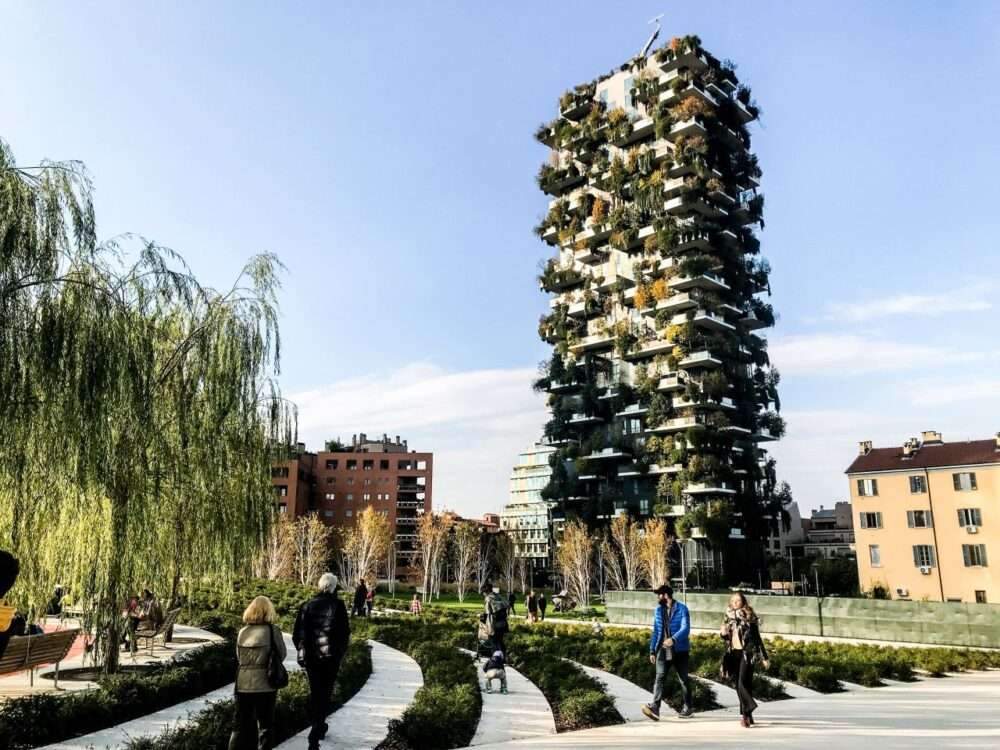As the world has become more environmentally conscious, the construction industry has taken steps towards more sustainable and environmentally friendly building practices.
Green building is becoming increasingly popular, with more and more builders adopting environmentally friendly methods and materials.
Not only do sustainable building practices benefit the environment, but they can also offer significant benefits to builders, landlords and occupants.
In this article, we will explore seven key advantages of green building that make it the way forward to build a better tomorrow.
Discover the many benefits of sustainable building practices, from cost savings and energy efficiency to improved indoor air quality and reduced environmental impact.

How are green buildings defined?
Green building and construction is the process of creating structures with an emphasis on sustainable development, resource efficiency and environmental protection.
This type of construction offers many advantages to both homeowners and the construction industry. The main advantage of green buildings is their ability to reduce the energy consumption of homes.
Green building technologies help reduce the need for building materials and energy-intensive construction processes.
This results in less energy consumption for heating, cooling and other building operations.
In addition, green building often involves incorporating renewable energy sources such as solar or wind power into buildings, which reduces energy consumption and costs.

Lower building maintenance and operating costs
Green building and construction practices can provide significant financial benefits and improvements in the bottom line by reducing building maintenance and operating costs.
Here are three major financial benefits of green building practices:
First, green buildings often require less maintenance and repair than traditional buildings. This is because they use durable and sustainable materials that have a longer life and require less maintenance.
For example, materials such as bamboo flooring or recycled steel frames can last longer and require fewer repairs than traditional materials, resulting in lower maintenance costs over time.
Second, green buildings are designed to be energy efficient, which lowers operating costs. Energy efficient designs include features such as highly efficient HVAC systems, insulation, and lighting.
Which can reduce energy consumption and costs, and these systems can be controlled remotely,
so that they operate only when necessary, which reduces energy use and costs.
Third, green buildings often include water conservation measures,
which can reduce water use and costs.
Water-saving fixtures such as low-flow faucets and toilets can reduce water consumption and lower your water bills.
Additionally, green buildings often use sustainable landscaping practices such as rain gardens,
which can reduce the need for expensive irrigation systems and reduce water use.
In general, green building and construction practices can be implemented
Significant cost savings by reducing maintenance and repair costs,
lowering energy consumption and costs, and reducing water use and costs.
Energy efficient and passive design
Green building designers work to reduce the building’s dependence on energy from non-renewable sources such as coal.
To do this, they may install solar panels to use energy from the sun or solar panels
Design windows to let in more natural light and reduce the need for artificial lighting.
These and other methods help ensure that the building uses energy efficiently,
and energy efficiency is important not only to those who use the space,
But also for everyone else because they can help save money and protect our environment.
Green building practices also emphasize reducing energy waste through
sustainable design and construction of buildings.
For example, green buildings often include insulation and air insulation to reduce heating and cooling losses.

Improve the quality of the indoor environment
The quality of air, lighting, and temperature inside a building is essential to the health and happiness of its occupants.
To create a safe and enjoyable space to be in, green buildings rely on
Features like operable windows and minimal use of harmful substances.
Building materials used in green buildings contain statistically
fewer harmful chemicals than their conventional counterparts.
This is important because some building materials such as paint, glue, sealants,
and carpet fibers can emit volatile organic compounds (VOCs) into the air.
This causes negative health effects such as headaches,
worsening seasonal allergies, and skin irritation.
By reducing the amount of volatile organic compounds in buildings,
green building helps improve air quality.
For more architectural news
Designing multi-use spaces and achieving interaction between them


 العربية
العربية